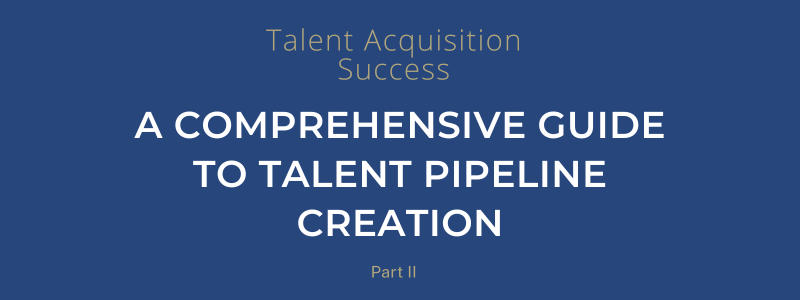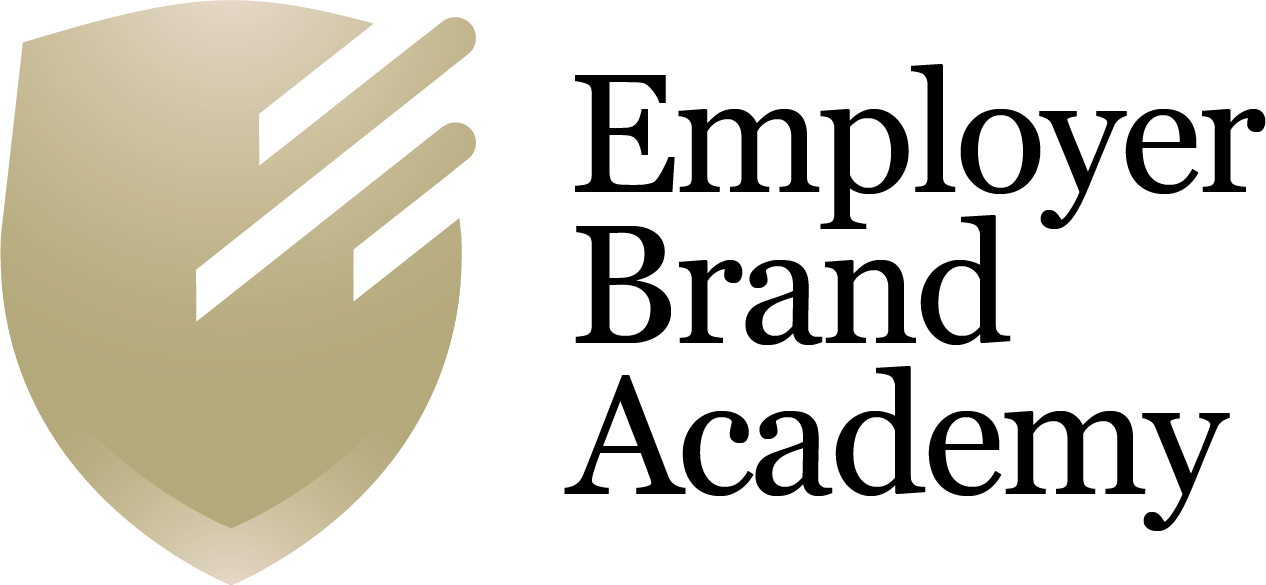A Comprehensive Guide to Talent Pipeline Creation (Pt. 2): Relationship Building
- 31/03/2023
- Posted by: Ali Ayaz
- Category: Recruitment

If you are looking to build and maintain a strong talent pipeline, it is not enough to just focus on recruiting. Building relationships is a key component to any successful employer brand strategy. In this second part of our tutorial blog article, we will focus on the importance of relationship building and how it can help us build and maintain a successful talent pipeline. We will explore networking, building relationships with educational institutions, employee referrals and other methods of digital marketing. Read our first part for a more comprehensive look at building a talent pipeline, and now let’s dive into relationship building!
1- RELATIONSHIP BUILDING: CULTIVATING LASTING CONNECTIONS WITH TALENT
1A- Networking
Building relationships with professionals in the industry, attending industry events, and joining professional organizations can help expand our network and identify potential candidates. To capture the attention and interest of potential job candidates, employers should focus on establishing relationships with them early on in the recruitment process. Employers should offer candidates the opportunity to learn more about the job and organization in an interactive, casual environment. This will help to create an initial attraction and reduce friction points for potential candidates.
1B- Building relationships with educational institutions
Building relationships with educational institutions, such as universities, vocational schools, and incubation centers can help organizations identify and recruit top talent early in their careers.
Campus recruitment targets college students and recent graduates. You can engage the audience typically through on-campus events, career fairs, and networking with professors and student groups. These young talent strive to gain the skills and experience they need to be successful in their careers. When you engage with educational institutions, you can demonstrate your commitment to helping students with their success. This can help to create a positive reputation for the organization and encourage students to apply for positions in the future.
Organizations can also form partnerships with educational institutions to create specialized curricula. You can ensure you equip students with the skills and knowledge for their respective fields. By creating specialized programs, you can also gain access to potential talent that may not have been available through traditional recruitment channels.
Furthermore, developing relationships with educational institutions can help organizations gain a better understanding of the industry they operate in. Through conversations with faculty, students, and alumni, organizations can gain insights into the latest trends in their field and gain a better understanding of the skills and qualities that potential employees will have.
1C- Creating an employee referral program
Encouraging current employees to refer their friends and colleagues for open positions brings great results. You can better identify qualified candidates who are a good fit for our company culture. They help to create an engaged workforce, allowing current employees to take ownership of the recruitment process. Referrals also provide access to an extended network of qualified candidates, since many of the people being referred may not be actively looking for a job.
When you leverage the networks of current employees, you can access a larger pool of qualified candidates and gain a better understanding of who might be a good fit for the company. Additionally, employee referrals are a cost-effective way to attract top talent, as employers pay a fraction of the cost typically associated with recruitment fees. This cost-effectiveness is further enhanced when employers incentivize employees who refer successful candidates. Finally, referrals can help create a sense of loyalty among current employees by giving them the opportunity to directly impact the recruitment process and feel valued as part of the team.
1D- Unlocking the potential of Employee Brand Ambassadors
Employee branding takes the employer brand concept a step further and focuses on the individual employees and how they can support and enhance the employer brand. The primary goal is to transform employees into brand ambassadors who will actively promote their employer’s brand and values.
Employee branding starts with creating an environment that empowers employees and encourages them to be brand ambassadors. Leaders must be visible, communicate transparently, and instill trust in the abilities of their employees. You should create a safe and supportive work environment through onboarding, orientation, and training programs, as well as physical and psychological support. Additionally, you should reward employees for their efforts and given opportunities to develop their skills.
You should communicate the employer brand learly and consistently, both internally and externally. You should develop an effective employer value proposition (EVP) and use it as a reference point for all communications. This means that all communications should be consolidated under the roof of your EVP. Furthermore, you should promote the employer brand through storytelling and a warm tone of voice.
Employee branding is an important part of employer branding and should be taken seriously. To build a sustainable talent pipeline, employers must create an environment that encourages employees to be brand ambassadors, communicate their employer brand effectively and consistently, and review the candidate experience to ensure it aligns with the employer brand.
2- DIGITAL MARKETING METHODS: CAPTURE THE ATTENTION OF AUDIENCE ONLINE
2A- Creating a career website
Having an effective career website not only does it provide a comprehensive overview of the company’s culture, values, and opportunities; but it also serves as an engaging, interactive platform that can be used to attract the right type of candidates. Employers can drive traffic from social media campaigns, organize events, and job boards to a single location to make all communications feel more connected.In order to effectively drive traffic to the website, employers should include SEO strategies such as relevant keywords, meta tags, and content optimization. Additionally, you should design the website to be mobile-friendly, as most job seekers use their mobile devices to search for job opportunities.
A well-strategized website with great content and user experience will make potential candidates feel more valued as they will be aware of our efforts to communicate beforehand. Having a comprehensive career portal will be serving as an engaging, interactive platform that offers visitors a comprehensive view of the employer’s brand, culture, values, and opportunities. This visually appealing website should be easy to navigate and feature the company’s core values and mission, job openings, employee testimonials and success stories.
These endeavors will help to attract the right type of candidates, build brand loyalty, and create a positive employer brand image. It can also help to create a pipeline of qualified candidates who are interested in the company’s job openings. By providing a comprehensive overview of the company’s opportunities, culture, and values, potential candidates can quickly identify if the company is the right fit for them.
2B- Strategizing blogging
Blogging is an ideal way to build a sustainable talent pipeline, as it has the potential to reach a wide range of target audiences, including those who have niche skills in the IT sector. By creating content specifically tailored to target talent, employers can draw in potential job seekers and create a steady stream of qualified applicants. It is an effective way of increasing a brand’s visibility, as well as spreading awareness of the organization and its available roles. There are many benefits to blogging.
Showcase for culture
You can use blogging as a tool to showcase your culture, values, and mission to potential job seekers. It gives you the opportunity to highlight the unique aspects of your organization that make it an attractive place to work. You can use this content to educate job seekers on the value of a specific job. You can display your expertise, as well as showcase your current projects and activities. This attracts the right type of talent, as it demonstrates the company’s commitment to developing its employees and staying ahead of the trends.
Furthermore, it is also a platform showcase the successes of current employees, which will help to enhance the organization’s reputation and attract the best talent.
Showcase for opportunities
Additionally, you can use blogging o demonstrate the wide range of career opportunities available within the organization. This includes promoting open job roles and providing potential applicants with the necessary information to make an informed decision.
Showcase for difference
By utilizing blogging as a tool for employer branding, employers can create a positive and engaging experience for job seekers. You can achieve this by providing content that is interesting, informative, and relevant to the target audience. Employers can also use blogging to create a sense of community by engaging with job seekers and responding to their questions or comments in a timely manner. This interaction can create a strong sense of trust and loyalty between the organization and its potential job seekers, which can help to build a sustainable talent pipeline.
2C- Harnessing the power of digital marketing
Utilizing social media platforms like Instagram, Twitter, and Facebook to promote job openings and engage with potential candidates is an effective recruitment marketing strategy. Linkedin recruitment is the most on-point tool as it allows employers to access a global network of potential candidates, track the progress of their recruitment process, and market their employer brand to a wider audience.
LinkedIn lets employers create a profile for their organization and post job listings. This makes it easier for potential candidates to find them. Additionally, the platform offers a range of features to help employers find the right candidates and track their progress. Examples include the ability to save searches, follow companies, and use advanced filters to narrow down the candidate pool. You will make it much easier to keep track of potential candidates and quickly identify the best fits for a given role.
Furthermore, LinkedIn also allows employers to publish content related to their employer brand, such as company mission statements and culture. You can use these to attract the attention of potential candidates and showcase the value of working at the organization. Additionally, employers can use the platform to engage with potential candidates and respond to inquiries, which helps to create a positive impression of the organization and build relationships with prospective employees.
3- CONCLUSION: SEALING THE DEAL FOR A SUCCESSFUL TALENT PIPELINE
Building a successful talent pipeline requires a strategic combination of employer brand management, recruitment campaigns, relationship building and digital marketing methods. It is important to establish a positive employer brand that resonates with the target audience, as well as to establish relationships with educational institutions and other organizations. Additionally, it is important to prioritize candidates’ convenience and design recruitment processes and content to reflect a unified brand image. Finally, employers should take advantage of digital marketing methods such as career websites, blogging, and social media recruitment to reach out to potential candidates. With these strategies in place, employers can build a successful talent pipeline and ensure their long-term success.
Leave a Reply
You must be logged in to post a comment.
